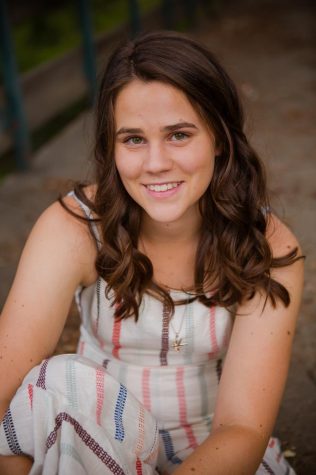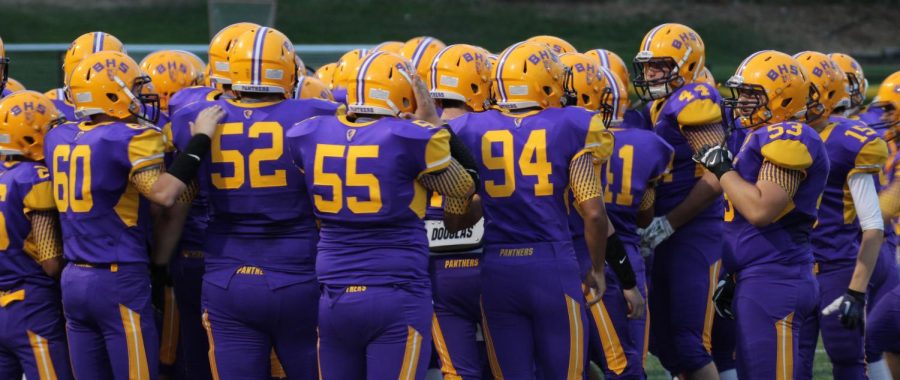Women in Football
A Different Face on the Field

It’s no secret that there’s quite a bit of gender disparity in the sports world. But from pay gaps to sheer gender ratio, no sport holds a candle to football, with nearly no college-sponsored women’s teams, and only one woman (to date) trying out for the NFL, an act which some sources speculate was a publicity stunt.
Laurie Frederick, CEO of the Independent Women’s Football League (IWFL) — one of three professional U.S. football teams for women — describes it as follows: “We all know the story of the one girl who joins the boys to play football. It’s our opinion that there’s probably another 30 to 40 girls behind her who’d want to play if it were all girls.”
In the case of the Boulder High Panthers, that “one girl” is actually two: freshman C-Team player Madeline Forney-Antolik and senior varsity/C-Team player Kyra Barnes.
And while the environment for women on other teams might be difficult, Barnes describes the atmosphere on the Panthers as encouraging and friendly. “The coaches are super supportive, the players are super awesome. [It’s] just kind of an awesome environment.”
However, that’s not to say it’s not without its difficulties. While nearly all sports are divided by gender, for football players at most high schools and colleges, it’s either play with the boys or don’t play at all.
And in a sport where height and weight play such an integral role, this can present some challenges. “You know, it’s difficult in a guy sport, because even though you can lift however much you want, however often you want, that’s never going to be the same as the guy standing next to you,” Barnes says. “So I feel like that’s been hard to see, that even if you work your very hardest, someone else’s half effort is just as good as your full effort.”
Despite the odds, Barnes hopes to continue playing football in college — and she plans on doing it on a men’s football team. Because while a co-ed tackle sport might not be ideal, the options available for professional women’s teams are limited — and sometimes undesirable.
In the IWFL and the Women’s Football Alliance (WFA), the two largest professional women’s teams, players often receive little to no compensation, and most actually end up paying their own expenses — a stark difference from the multi-million dollar salaries held by their NFL counterparts. Quoting Kezia Disney, IWFL Chief Operating Officer, “You’re not going to make money in women’s football right now, anyways. Our league is focused on the sport.”
In another, slightly worse, case, players in the Legends Football League (unironically known as the Lingerie Football League until 2013), wear uniforms sporting exposed bellies and something that can only be referred to as a boob window. Although they do wear helmets, the bare minimum of padding is provided, with only their shoulders and collarbones protected by anything more than spandex. Men’s uniforms are designed primarily to enhance performance and safety — the designer of these uniforms, it seems, had something else in mind.
In the face of these obvious shortcomings, there has been a huge push towards equality in women’s athletics in recent years, with both the IWFL and the WFA being founded in the early 2000s. And while the IWFL may be designed to run like a semi-professional men’s league, the opportunity for women to participate on a professional football team at all is a step in the right direction.
And even with the challenges and potential pitfalls, Barnes is excited and passionate about continuing to play through high school and college. “It’s just a love for the game. All you want to do is do your job perfectly and watch your team succeed. Even if you’re not on the field, you’re rooting for everything that happens, and making sure that everyone has a positive mindset.”
With leaders like Barnes joining the sport every year, the only way we can go from here is forward.

A senior at Boulder High, Jac has had an interest in journalism since her middle school years, an interest which has only been exacerbated by the current presidential stance against honest reporting. This year, she hopes to improve her own writing skills and help The Owl gain a more sizable readership.
In class, Jac has a healthy interest in math and science and a slightly more bizarre interest in discovering and inventing Latin insults she will probably never use. She also spends a fair amount of time tutoring and taking the bus.
When she’s not at school or doing homework, Jac enjoys reading, cooking, and defending the stylistic usage of sentence fragments. And while some Owlies may...



Ellory Boyd • Oct 31, 2018 at 3:07 pm
Kyra is an icon and this is a great article!